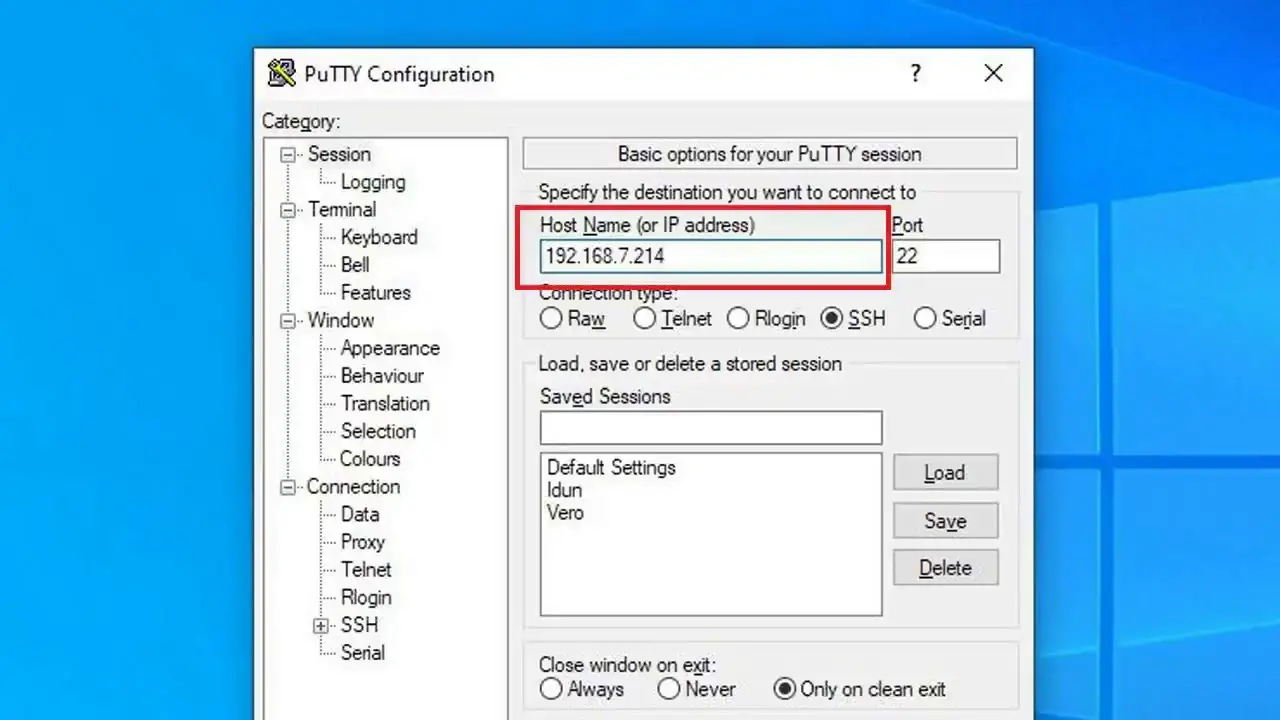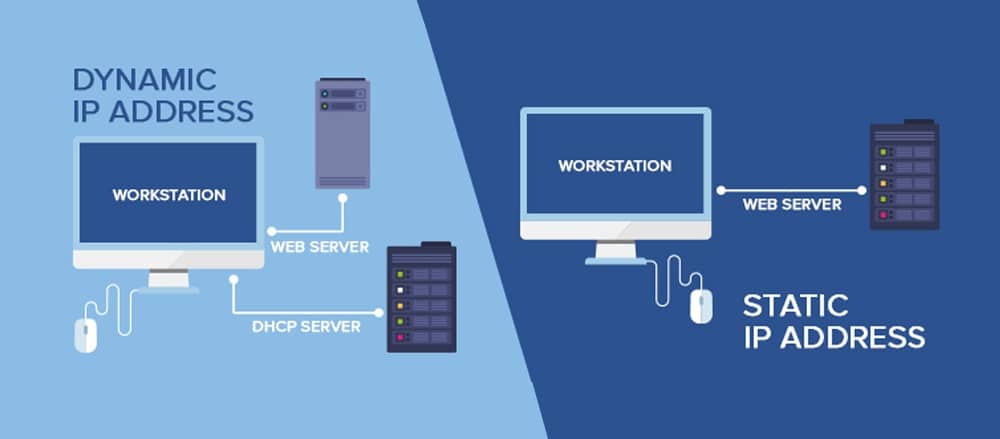Configuring Static IP Addresses on Linux

To configure a static IP address on Linux, edit the network configuration file, typically /etc/network/interfaces. For example, to set a static IP address of 192.168.1.100 with a netmask of 255.255.255.0 and a gateway of 192.168.1.1, add the following lines:

auto eth0
iface eth0 inet static
address 192.168.1.100
netmask 255.255.255.0
gateway 192.168.1.1Restart the networking service for the changes to take effect:

sudo systemctl restart networkingConfiguring Dynamic IP Addresses on Linux
To configure a dynamic IP address on Linux, remove any static IP settings from the network configuration file and restart the networking service:
sudo nano /etc/network/interfacesComment out the static IP settings (if present):
#auto eth0
#iface eth0 inet static
#address 192.168.1.100
#netmask 255.255.255.0
#gateway 192.168.1.1Restart the networking service:
sudo systemctl restart networkingThe system will now obtain an IP address dynamically via DHCP. To verify the assigned IP address, use the ip addr command:
ip addr show eth0
```## Configuring Static And Dynamic IP Addresses On Linux
### Executive Summary
Properly managing IP addresses is a vital aspect of network administration, ensuring the seamless connectivity and functionality of network devices. This comprehensive guide delves into the intricacies of configuring static and dynamic IP addresses on Linux systems, empowering network administrators with the knowledge and expertise to manage their network infrastructure effectively. By understanding the concepts, implementation techniques, and troubleshooting strategies covered in this guide, readers will gain the skills necessary to establish reliable and efficient network configurations.
### Introduction
In the realm of networking, IP addresses serve as the unique identifiers for devices connected to a network. Assigning IP addresses to network devices is a fundamental task in network administration, and understanding the difference between static and dynamic IP addressing is crucial. This guide will explore the intricacies of configuring both static and dynamic IP addresses on Linux systems, providing a comprehensive overview of the steps and considerations involved.
### Static IP Addresses
Static IP addresses are manually assigned to network devices and remain constant over time. This type of IP addressing is typically preferred for devices that require a persistent and predictable IP address, such as servers and network appliances.
* **Advantages:**
* Provides a fixed IP address for devices, simplifying network management and troubleshooting.
* Enhances security by preventing unauthorized devices from accessing the network.
* Ensures consistent communication between devices, reducing network disruptions.
### Configuring Static IP Addresses
1. **Determine the network interface:** Identify the network interface you wish to configure. This can be done using the `ifconfig` command.
2. **Edit the network interface configuration file:** Locate the network interface configuration file, typically named `/etc/network/interfaces` or `/etc/sysconfig/network-scripts/ifcfg-eth0`.
3. **Add the static IP address:** Add the following lines to the configuration file:address <IP Address>
netmask <Subnet Mask>
gateway <Default Gateway>
```- Restart the network service: Once the changes have been made, restart the network service to apply the new configuration.
DHCP (Dynamic Host Configuration Protocol)
DHCP is a network protocol that automatically assigns IP addresses to devices on a network. This simplifies the process of IP address management and ensures that devices can dynamically obtain IP addresses without manual configuration.
- Advantages:
- Automates IP address assignment, reducing administrative overhead.
- Supports a large number of devices, making it suitable for large networks.
- Ensures that devices always have valid IP addresses, minimizing network disruptions.
Configuring DHCP
-
Install the DHCP server: Install a DHCP server software package on the Linux system.
-
Configure the DHCP server: Edit the DHCP server configuration file, typically located at
/etc/dhcp/dhcpd.conf. -
Define the DHCP range: Specify the range of IP addresses that will be assigned by the DHCP server.
-
Start the DHCP server: Start the DHCP server to begin assigning IP addresses to devices.
Advantages Of Static Vs. Dynamic IP Addresses
The choice between static and dynamic IP addresses depends on the specific requirements of the network.
-
Static IP Addresses:
- Suitable for devices that require a fixed IP address, such as servers and network appliances.
- Enhances security and simplifies network management.
-
Dynamic IP Addresses:
- Simplifies IP address management and reduces administrative overhead.
- Ideal for large networks with numerous devices.
Troubleshooting IP Address Issues
Common IP address problems and their troubleshooting steps include:
-
IP address conflict: Occurs when two devices on the network have the same IP address. Check the IP addresses assigned to devices and resolve any conflicts.
-
Incorrect IP address: Verify that the IP address configured on the device matches the network’s IP addressing scheme.
-
Gateway issues: Ensure that the default gateway is correctly configured and accessible.
Conclusion
Effectively configuring IP addresses on Linux systems is a critical aspect of network administration, ensuring reliable and efficient network connectivity. By understanding the concepts, implementation techniques, and troubleshooting strategies presented in this guide, administrators can confidently manage their network infrastructure, optimizing performance and minimizing disruptions. Whether choosing static or dynamic IP addresses, administrators must consider the specific requirements of their network to ensure optimal functionality.

I honestly belive this is one of the better posts I have read on this website. It explains everything very clearly and concisely, and I learned a lot from it.
This post is a complete mess. It’s full of errors and contradictions, and it’s impossible to follow.
This post provides a good starting point for understanding static and dynamic IP addresses on Linux. However, I would recommend supplementing it with other resources to get a more comprehensive understanding of the topic.
I disagree with the author’s conclusion that dynamic IP addresses are always better than static IP addresses. In some cases, static IP addresses can be more beneficial.
I find it ironic that the author is advocating for the use of static IP addresses when dynamic IP addresses are becoming increasingly common.
This post is full of sarcasim. The author clearly doesn’t believe that static IP addresses are worth using.
I LOL’d at the author’s suggestion that we should all use static IP addresses. It’s like they’re living in the past.
This post is very informative. I learned a lot about static and dynamic IP addresses.
I’m not sure what the author is trying to say. The post is full of contradictions.
I found the post helpful. It explained how to configure static and dynamic IP addresses on Linux in a clear and concise way.